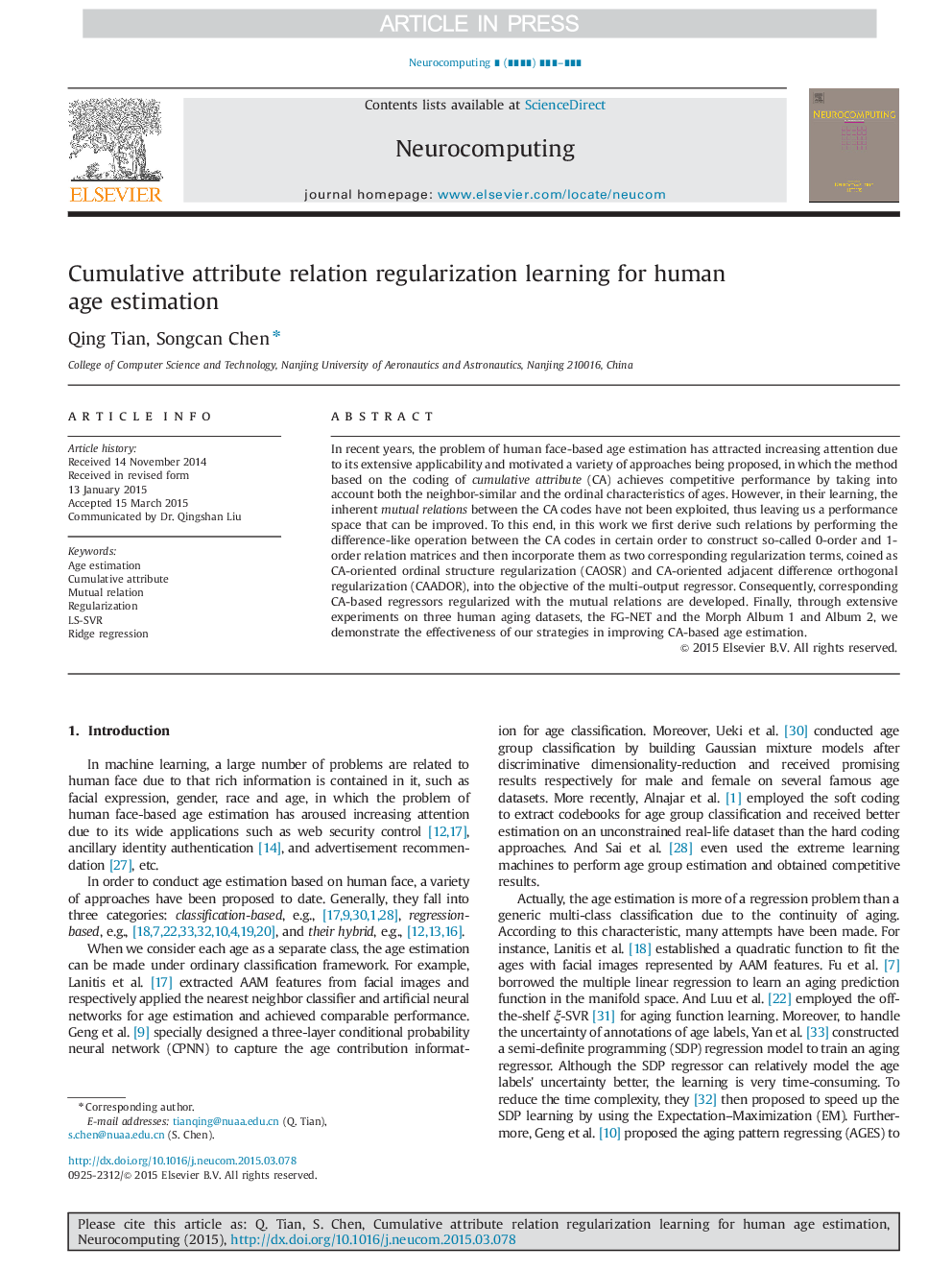| Article ID | Journal | Published Year | Pages | File Type |
|---|---|---|---|---|
| 6865778 | Neurocomputing | 2015 | 12 Pages |
Abstract
In recent years, the problem of human face-based age estimation has attracted increasing attention due to its extensive applicability and motivated a variety of approaches being proposed, in which the method based on the coding of cumulative attribute (CA) achieves competitive performance by taking into account both the neighbor-similar and the ordinal characteristics of ages. However, in their learning, the inherent mutual relations between the CA codes have not been exploited, thus leaving us a performance space that can be improved. To this end, in this work we first derive such relations by performing the difference-like operation between the CA codes in certain order to construct so-called 0-order and 1-order relation matrices and then incorporate them as two corresponding regularization terms, coined as CA-oriented ordinal structure regularization (CAOSR) and CA-oriented adjacent difference orthogonal regularization (CAADOR), into the objective of the multi-output regressor. Consequently, corresponding CA-based regressors regularized with the mutual relations are developed. Finally, through extensive experiments on three human aging datasets, the FG-NET and the Morph Album 1 and Album 2, we demonstrate the effectiveness of our strategies in improving CA-based age estimation.
Related Topics
Physical Sciences and Engineering
Computer Science
Artificial Intelligence
Authors
Qing Tian, Songcan Chen,
